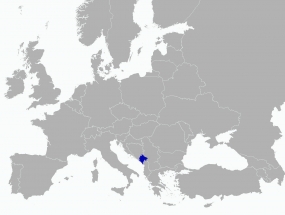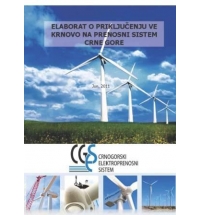Connection study of Wind Power Plant Krnovo (72 MW) to the transmission network of Montenegro
client: CGES (Montenegro)
type: Study (Renewable, Transmission, Generation)
finishing date: July 2011
team: Nebojsa Jovic - Project Leader, M. Vukovic and N. Rusanov - Consultants, M. Stojkovic, T. Martinovic, A. Oros
Objective of the connection study is to analyze all possible connection variants and to determine optimal point of common coupling (PCC) between the WPP Krnovo and transmission network, taking into account valid transmission network development plan and grid connection code of Montenegro. Analyses of the optimal PCC between the WPP Krnovo and transmission network have been performed in accordance with the principle to fit the PCC as much as possible into the valid transmission network development plan in order to minimize the total investment costs of the connection infrastructure.
The following analyses have been performed in order to verify whether wind generators Mitsubishi MWT 95 - 2.4MW – doubly fed induction generator, General Electric GE 2.5/2.75 MW with full-size converter and General Electric GE 2.85MW – doubly fed induction generator, envisaged to be installed in WPP Krnovo respectively, comply with the Montenegrin grid code:
- Load flow analyses – network element loadings, security N-1 assesment, power losses, voltage stability and reactive power control;
- Short circuit analyses;
- Voltage flickers emission analyses (power quality);
- Impact of intermittent WPP Krnovo production on EPS of Montenegro (secondary and tertiary reserve);
- Dynamic stability – fault ride through capability, mid-term stability assessment and small signal stability analyses.
Type of services provided:
- Optimal PCC analyses
- Load flow analyses
- Network security assessment
- Voltage stability and reactive power control analyses
- Short circuit analyses
- Voltage flickers analyses
- System reserve analyses
- Transient stability analyses
- Mid-term stability analyses
- Small signal stability analyses


